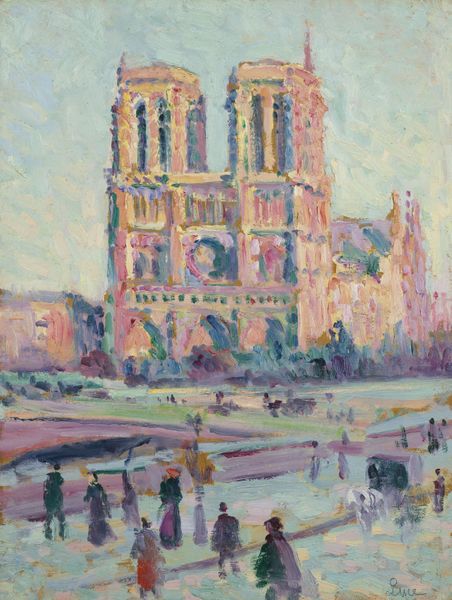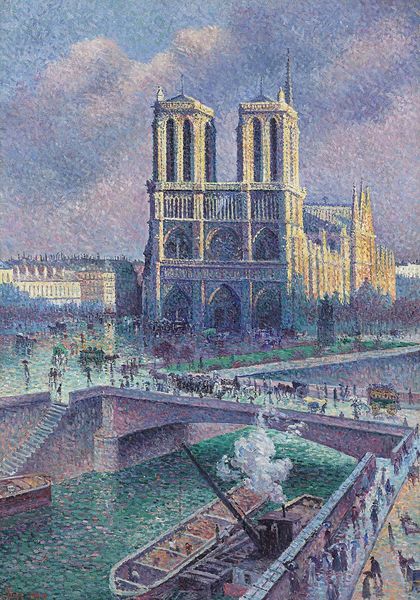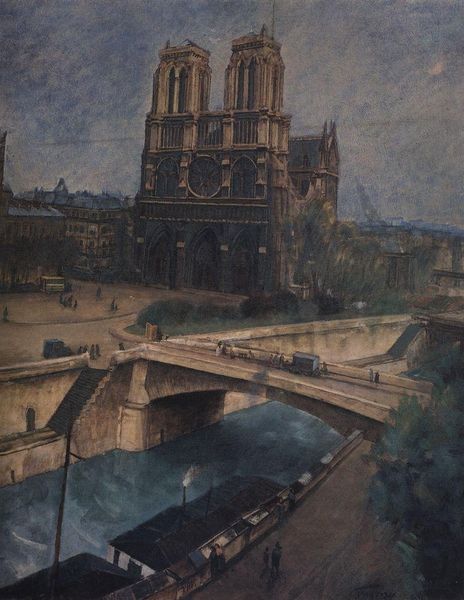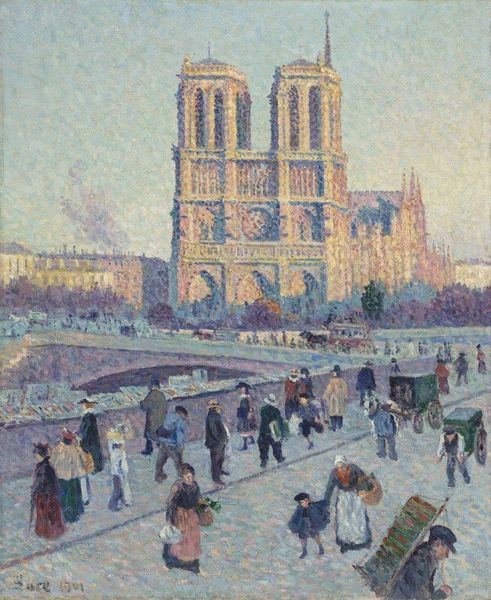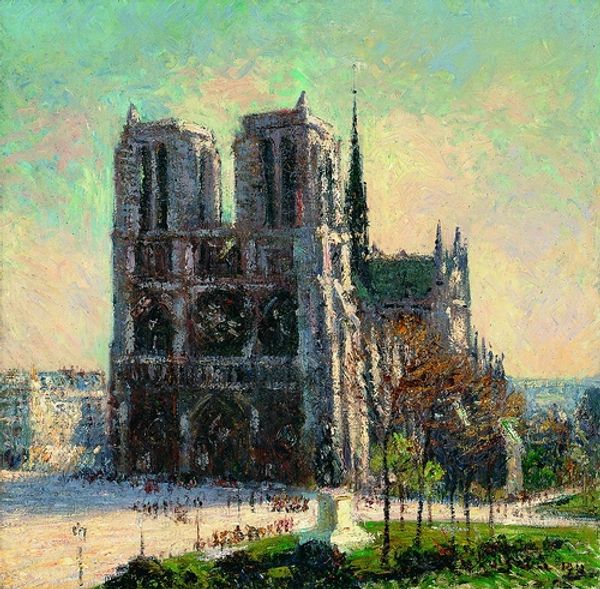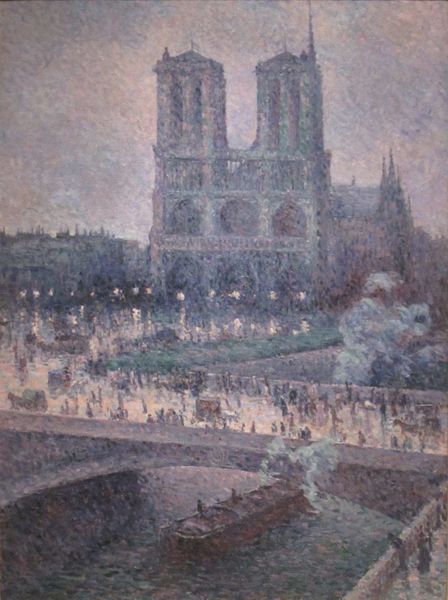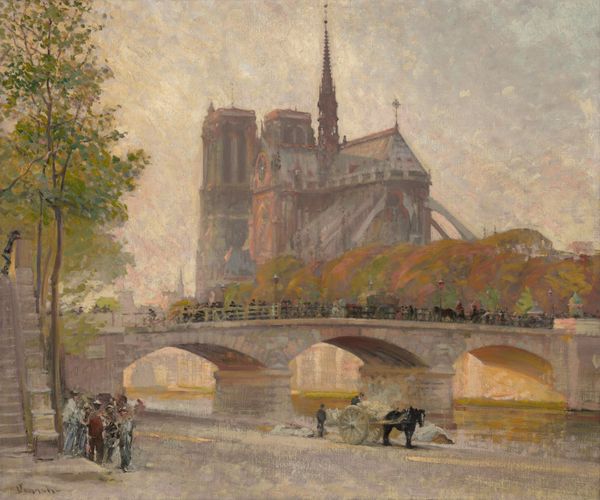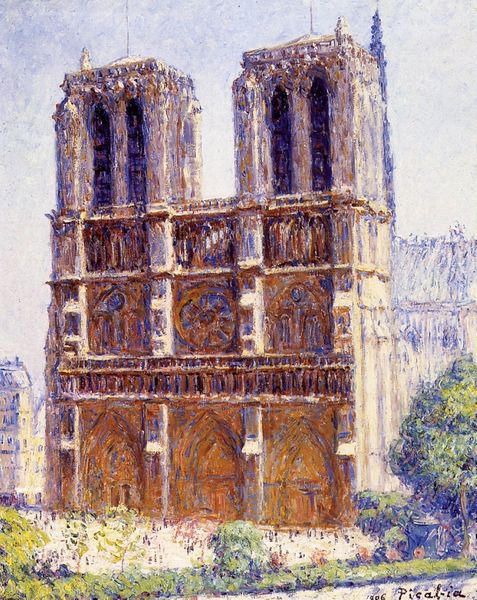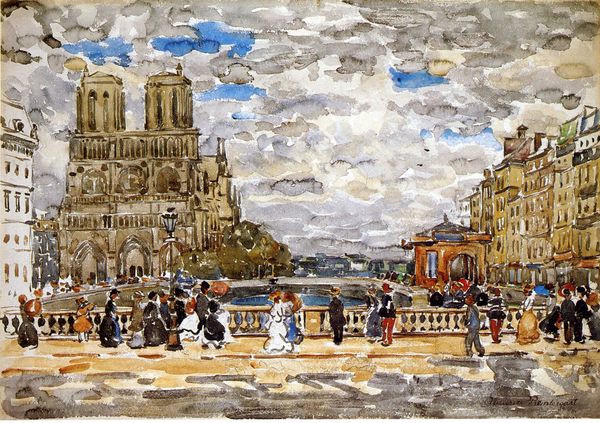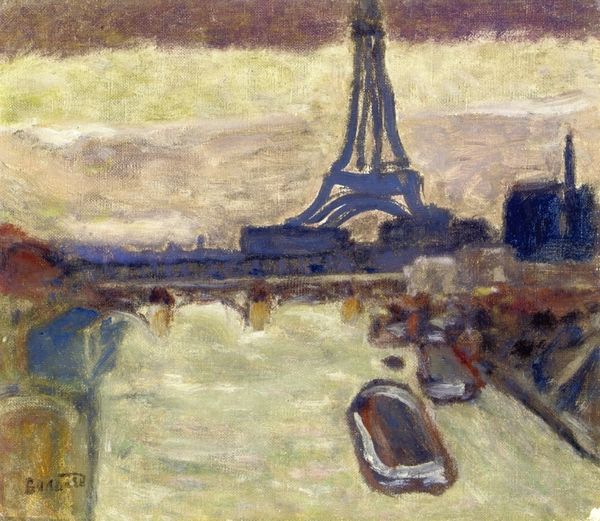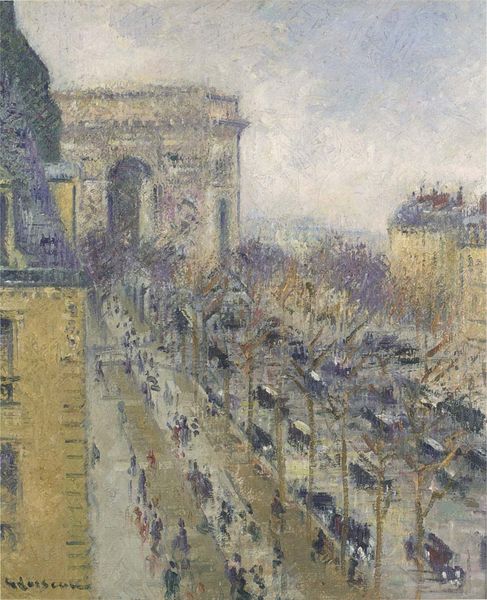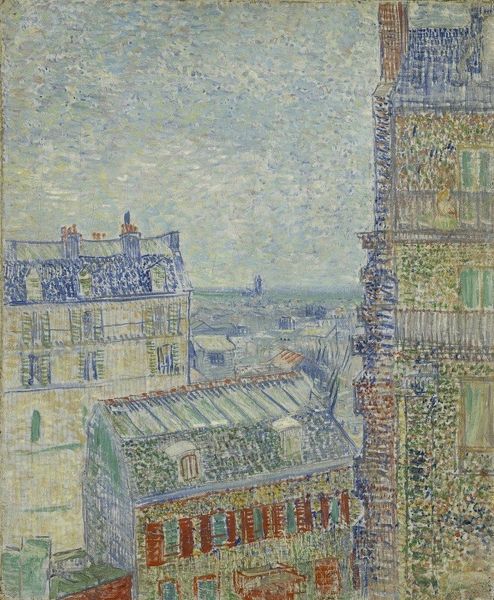
Dimensions: 32 x 21 1/2 in. (81.3 x 54.6 cm)
Copyright: No Copyright - United States
Curator: Here we have Maximilien Luce's "Notre Dame," an oil on canvas completed in 1899. It’s a beautiful example of post-impressionist cityscape painting, held in the collection of the Minneapolis Institute of Art. Editor: Well, the first thing that strikes me is how this isn't your typical, tourist-postcard Notre Dame. It’s shrouded, almost muted in its grandeur. It’s seen through the atmospheric veil of a bustling Parisian day. Curator: Exactly! Luce wasn't interested in a sterile depiction. He used plein-air techniques to capture the energy of the modern city—the smokestacks, the flurry of people. Notre Dame, then, becomes a symbol amid this constant motion and change. Editor: It makes me think about collective memory, really. How a famous landmark can feel so personal and ordinary at the same time. There are countless other, equally-important narratives co-existing with this imposing symbol of the church. Curator: Notice how he places Notre Dame quite centrally in the composition, anchoring the entire scene. While its facade is still imposing, its hazy appearance might also reflect the changing perceptions of religious institutions in the era, dwarfed by progress. Editor: That soft light definitely hints at a certain cultural distance, maybe. It’s dreamy, and the brushwork is so active! All those tiny dashes create the illusion of constant movement, a society hurtling into the future, reflected in water and the haze of the day. It feels like the calm eye of the storm Curator: The composition draws a fascinating contrast between the eternal, stone facade of the cathedral and the fleeting lives bustling in the foreground. This play might subtly point to deeper tensions and the negotiation of meaning in an era defined by rapid modernization. Editor: I guess that this kind of image reflects not only how an artist relates to an iconic edifice, but also to the times when that icon seemed to evolve beyond our personal perceptions. Makes me wonder what our impression might look like today… Curator: Precisely! Art becomes a conduit. What begins as an observation about light turns into a profound reflection on time, culture, and the symbols that shape us. Editor: It also reminds us that an enduring cultural image has value, and how a work of art captures and interprets change gives an artist enduring status.
Comments
No comments
Be the first to comment and join the conversation on the ultimate creative platform.
